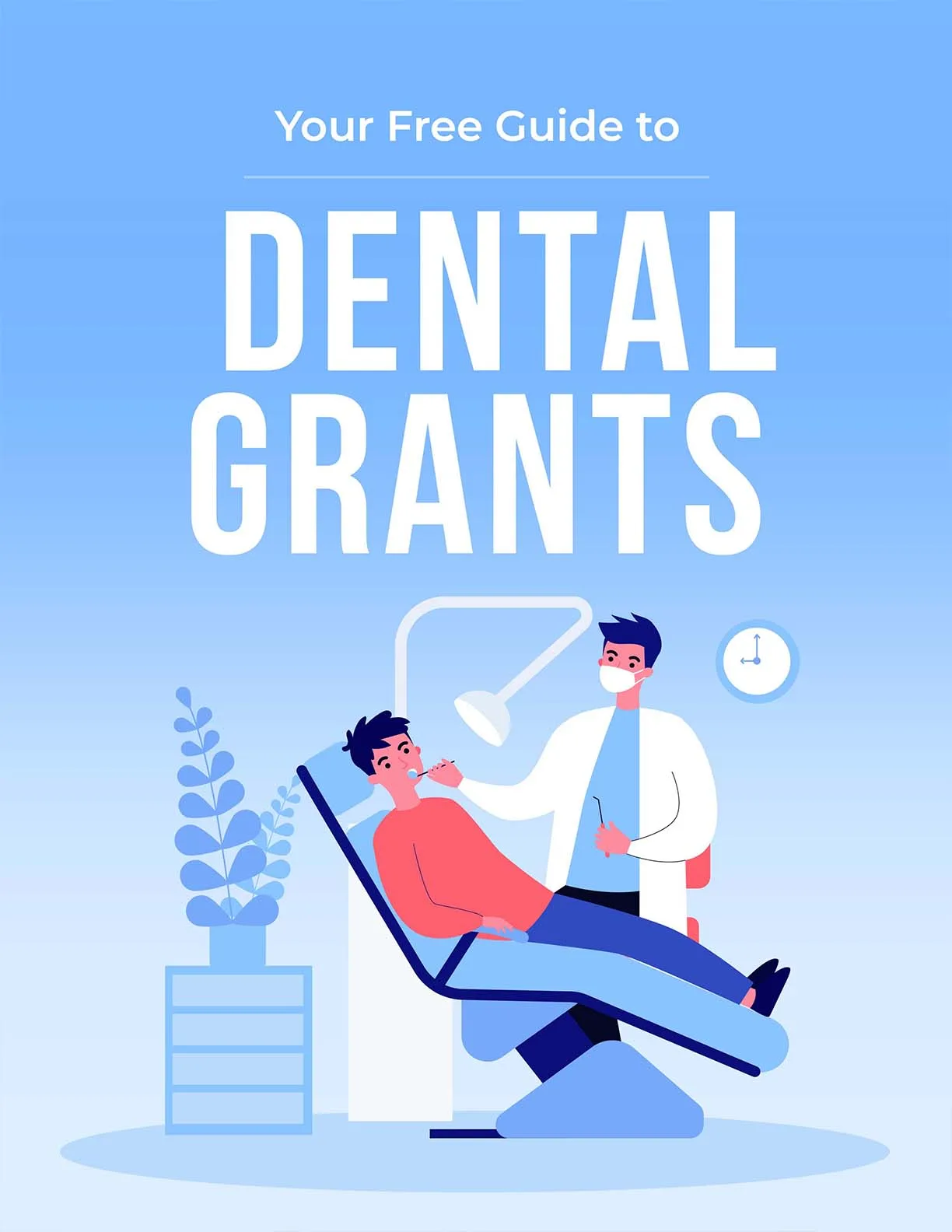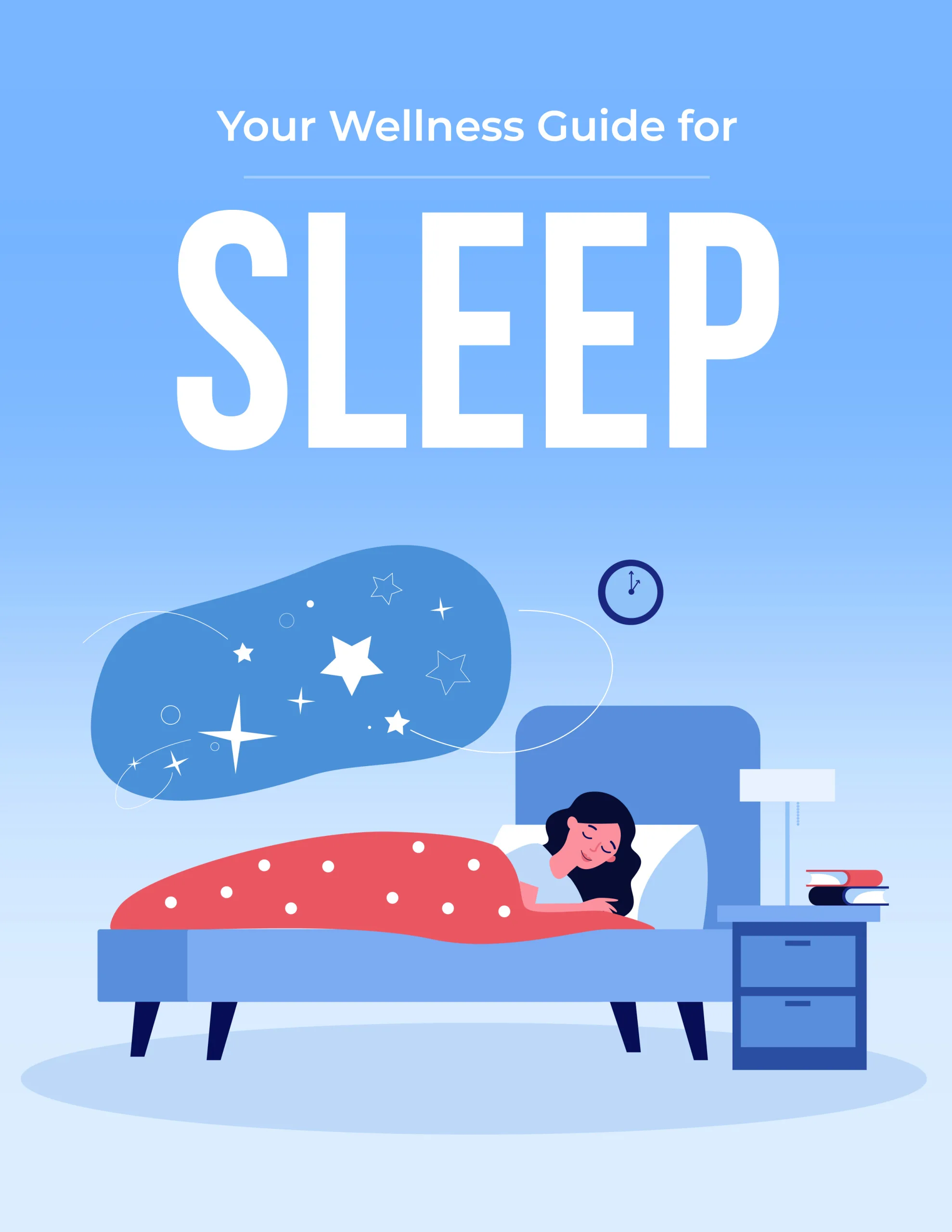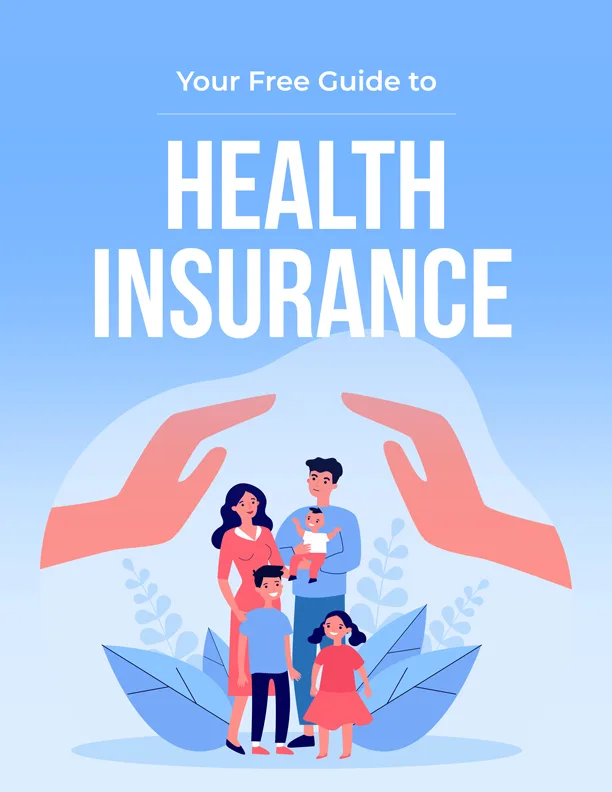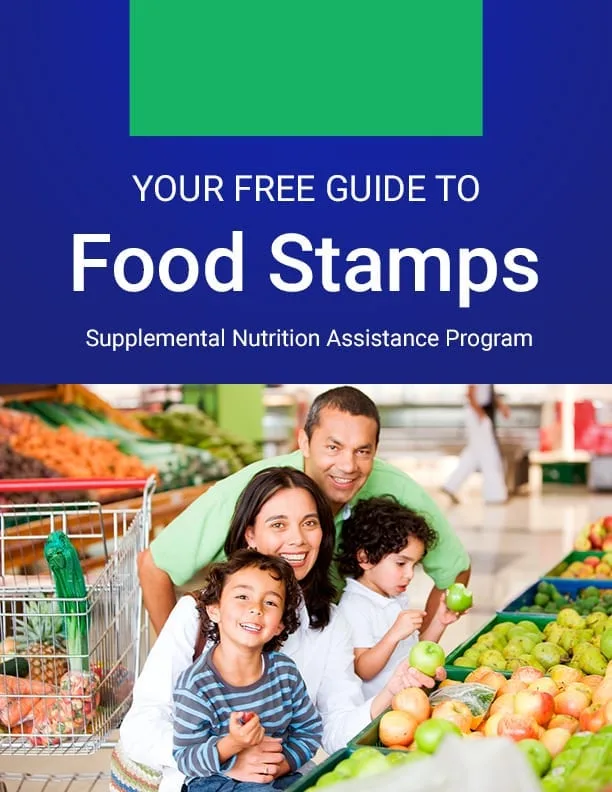How to Go Ketogenic: Diet Guide
How to Go Ketogenic: Diet Guide
We are privately owned and not affiliated with the government in any way or form.

The ketogenic diet has seen an uptick in popularity recently, but it’s been around since the 1920s as an effective way to treat patients with epilepsy. While similar to the low-carb diet, this diet emphasizes dependence on fat as the main source of calories, with around 15 to 20 percent of calories coming from protein and only 5 to 10 percent from carbohydrates. Is this somewhat intense diet plan right for you? Read on and decide for yourself.
What Is a Ketogenic Diet?
The idea behind the ketogenic diet is to send the body into a state of ketosis, which is what happens when the body burns fat for calories instead of carbohydrates. With only a small percentage of your calories coming from carbs, the body is forced to use your fat stores for fuel. Furthermore, devotees claim that by banishing most carbs and focusing on eating fat, you can lose weight without unpleasant feelings of hunger.
Types of Keto Diets
Standard – Very low carb (10%), moderate protein (20%), high-fat diet (70%).
Cyclical – Mix the standard keto diet with several days of higher carbs, like 5 keto days and 2 higher carb days.
Targeted – Standard, except when working out, when you add more carbs.
High protein – Very low carb (5%), high protein (35%), high fat (60%) diet.
Most people doing keto are on the standard or high protein types; the cyclical and targeted keto is more for performance athletes and bodybuilders.
Since the goal is to get to ketosis and stay in ketosis, some people opt to combine intermittent fasting (eating 8 hours, fasting 16 hours each day) with keto to help enter ketosis faster.
What You Eat (and Don’t Eat) on a Ketogenic Diet
For the standard keto diet, your macronutrient breakdown should be as follows based on calories consumed:
- Fat 70-80%
- Protein 20% Moderate protein consumption because too much protein turns into glucose
- Carbs 10%
Here is a list of foods in each category:
- Fat – 165 g, based on a 2,000 calorie daily intake
- Grass-fed butter and heavy cream
- Unprocessed cheeses like cheddar, goat, cream, blue, and mozzarella
- Nuts and seeds like almonds, walnuts, flaxseeds, chia seeds, and sunflower seeds
- Healthy oils including extra virgin olive oil, coconut oil, and avocado oil
- Avocados
- Protein – 75 g, based on a 2,000 calorie daily intake
- Meat including red meat, ham, sausage, bacon, chicken, and turkey
- Fatty fish like salmon, trout, tuna, and mackerel
- Eggs (pastured or omega-3 whole eggs)
- Carbs (vegetables and fruits) – 40 g, based on a 2,000 calorie daily intake
- Spinach, kale, and other leafy greens – 3.63 to 3.74 g of carbs per 100 g
- Tomatoes – 2.69 g of net carbs per 100 g
- Cucumbers – 3.36 g of carbs unpeeled or 2.16 g peeled per 100 g
- Bell peppers – 5.88 g of carbs per 100 g
- Broccoli – 4.04 g of net carbs (total carbs minus fiber) per 100 g
- Lettuce – 2.97 g of carbs per 100 g
- Zucchini – 3.11 g of carbs per 100 g
- Cauliflower – 2.97 g of net carbs
- Asparagus – 3.88 g of carbs per 100 g
- White mushrooms – 3.26 g of carbs per 100 g
- Celery – 2.97 g of carbs per 100 g
- Raspberries – 12 g per 100 g
- Coconut – 15 g per 100 g
How Does a Ketogenic Diet Help You Lose Weight?
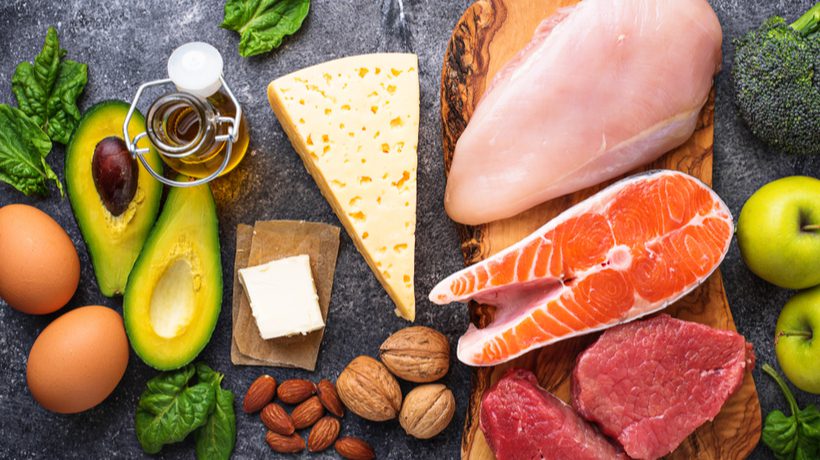
Let’s take a step back and understand how the human body gets energy. In a typical diet, we are fueled primarily by glucose, or blood sugar, which we primarily get from carbs in foods like bread, fruit, pasta, legumes, potatoes, and sweets. When you eat very small amounts of carbs — as the ketogenic diet requires — your body needs more fuel to keep going. It gets this fuel through a process called ketogenesis, whereby the liver breaks down fat into a usable energy source called a ketone body (or ketones for short). Ketosis then sets in, a remarkable process that makes it possible for your body to go without food for as long as 73 days (but we don’t recommend going without food for that long!).
Now, since you don’t want to starve yourself into a state of ketosis, the next best thing is to induce it by avoiding sugar, bread and other grains, beans, and even some kinds of fruit. Instead, you’ll primarily subsist on meats, eggs, cheese, fish, nuts, butter, oils, and vegetables.
Advocates of ketogenic diets as a way to lose weight propose that it leads to a metabolic advantage that helps burn ten times more fat and an extra 400 to 600 calories per day. That’s about the same as a vigorous hour or two of physical activity. The main scientific model that’s used to explain the advantage is the “carbohydrate-insulin hypothesis,” which has been promoted by experts like Harvard professor David Ludwig and others. The theory is that eating carbs drives up insulin production, creating hunger and causing the body to hold on to fat. But when you replace carbs with fat, you reduce hunger, boost calorie burn and melt away fat instead.
How Do You Know When You’re In Ketosis?
Once you start the keto diet, it should take anywhere from two to four days, and up to a week to reach ketosis. But how do you know when your body has reached this point? Look for these signs and symptoms:
- Bad breath, which may smell fruity. If this happens to you, you may want to brush your teeth throughout the day and/or chew sugar-free gum.
- Weight loss. This is a good symptom! Your immediate weight loss (in the first week) is likely to be from stored carbs and water, but once that store is gone, weight loss may slow somewhat as your body shifts to burning stored fat.
- Decrease appetite. This is probably because of your increased protein and vegetable ingestion and changes to your body’s hunger hormones.
- Keto flu. While you may experience “keto flu,” feelings of tiredness, brain fog, and congestion when you start your keto diet, these symptoms typically dissipate after the first two weeks as your body adjusts to the new diet.
- Increased focus and energy. Once you are past the keto flu period, many keto dieters report that they feel more energetic and focused. This happens because the brain starts burning ketones instead of glucose. Ketones are an efficient brain fuel and have even been studied as a way to treat brain diseases and conditions like concussion and memory loss.
- A short-term decrease in athletic performance. For most people on the keto diet, this decline in performance only lasts a few weeks, after which it goes back to normal levels or even above. The dip happens because the glycogen stores in your muscles decrease. One study also found that a keto diet can increase the ability to burn fat during exercise by more than double (230%).
- Digestion issues. Keto dieters can experience diarrhea, constipation, or both intermittently in the first few weeks. To counter this kind of problem, make sure you are eating plenty of low-carb vegetables; their fiber can help regulate your digestive tract.
- Insomnia. This is another transitional symptom that usually goes away in a couple of weeks.
If you are still not sure if you are in ketosis, you can purchase blood, urine, and breath tests that will let you know. Breath tests are devices that measure the amount of acetone, a byproduct of ketosis, when you blow into them. Urine tests are strips you dip into the urine to measure acetoacetate. Blood tests require a device (a blood ketone meter) and blood test strips. A small drop of blood is placed on the strip and the strip is then inserted into the meter for analysis.
While this sounds promising, keep in mind that it’s only a hypothesis. Most studies of ketogenic and other low-carb diets suggest that they work as well as any other diet when it comes to weight loss. So, is the ketogenic diet for you? Keep reading to hear some of the arguments in favor of it.
Pros of Going Ketogenic
You’ve already heard that the ketogenic diet is supposedly good at burning fat, but what else does it have going for it? If celebrities are doing it, should you be doing it too? Here are a few of the reasons why you might want to jump on the bandwagon.
- Reduced risk for diabetes. Research suggests that low-carb diets tend to improve risk factors for diabetes, including poor blood sugar management and insulin resistance. One study found that following a keto diet improved insulin sensitivity by 75%. In another study of diabetic individuals, participants on a keto diet lost an average of 26.2 pounds over two years.
- Reduce risk for cardiovascular disease. A keto diet can reduce body fat, high blood pressure, high triglycerides, and unhealthy cholesterol levels, all of which are risk factors for heart disease and stroke.
- Might have anti-cancer effects. Researchers are investigating whether a keto diet can slow cancerous tumor growth.
- Better brain health. One study concluded that although the underlying workings are not yet well defined, the ketogenic diet has the potential to protect from various other neurodegenerative diseases, including Alzheimer’s disease, Parkinson’s disease, and childhood epilepsy. It may even help the healing of traumatic brain injuries.
- Reduce effects of polycystic ovary syndrome (PCOS). Because it reduces insulin levels, the keto diet may help with symptoms of PCOS including fertility issues, weight gain, and testosterone levels.
- No calorie counting or food tracking. Just eat the foods on the plan and avoid the rest.
- Less hunger. The fat and protein you eat on the keto diet are filling, so you won’t feel hungry and you’ll have fewer cravings once you wean yourself off of sugar and simple carbs.
- Online community. There are plenty of groups online full of practicing ketogenic fanatics ready to provide advice and moral support.
Cons of Going Ketogenic
As one of the more difficult diets, the ketogenic diet has its pitfalls. Good carbs (like whole grains) contain lots of valuable nutrients, and cutting out a few food groups can stress out your body. Take a look at some of the warnings against this diet.
- It’s hard to maintain. The state of ketosis relies on giving up carbs almost completely, and one slip up sends your body into its regular, glucose-loving state. That may leave you feeling like it’s pointless to even try dieting.
- It triggers fatigue, nausea, and brain fog (the “keto flu”). As your body adjusts to a ketogenic diet, you may experience some side effects, from fatigue to bad breath. The bright side is once you get over the initial hurdle, you may have more energy since your body won’t be subject to as many blood sugar fluctuations.
- You may get constipated. Since you will be eating a lot less fiber than is recommended, you may become constipated. Fiber also has protective effects regarding cancer and other chronic illnesses, so be sure to take a supplement.
- You may get diarrhea. Strangely, a lack of fiber can also cause diarrhea. This unhappy condition can also be caused by a gallbladder overwhelmed from breaking down so much fat or by an intolerance to artificial sweeteners.
- You might get micronutrient deficiencies. Because you’re no longer eating carbs, you need to make sure you’re getting all your nutrients. You may want to take a good multivitamin.
- Can cause kidney stones or gout. This is from the high intake of animal proteins, which increases calcium and uric acid levels. Higher levels of calcium and uric acid are risk factors for kidney stones, while high uric acid increases the risk of gout.
- Reduced athletic performance. This is controversial because some athletes swear that keto made them perform better. However, a study published in the Journal of Sports Medicine and Physical Fitness found that participants on a keto diet performed worse on high-intensity cycling and running.
- Risk of ketoacidosis. People with diabetes should only follow the keto diet with a doctor’s permission and close supervision. Otherwise, there is a risk that ketosis can trigger a dangerous condition called ketoacidosis, in which the blood becomes too acidic and can damage the liver, kidneys, and brain.
- Loss of muscle mass and slowed metabolism. When you don’t eat enough protein, some of your weight loss can be muscle rather than fat. Since muscle burns more calories than fat, this can slow your metabolism which makes it harder to lose weight and more likely to regain the weight you lost plus some once you stop.
- Increased cholesterol and heart disease risk. If you eat too much high-fat meat, you are likely to increase your bad cholesterol levels and put yourself at risk for heart disease. Try to eat lean meats, plenty of vegetables, and heart-healthy fats.
- Hair loss and changes in hair texture. This can happen because of nutrient deficiencies, especially biotin, found in fruit and legumes, or as a result of a drop in calorie consumption. Eat egg yolks, organ meats, nuts like almonds and walnuts, cauliflower, and mushrooms to get your biotin; alternatively, you could take a supplement.
How to Go Ketogenic
Getting Started
Because it’s a somewhat extreme form of dieting, the best place to start is by speaking with your doctor. You may benefit from the very low-carb lifestyle, but you’ll want to check with a medical professional to make sure all your dietary needs are being met.
Next, you’ll want to plan your transition into the ketogenic lifestyle. Start by making your dinners keto, then slowly work your way up from there. Add more and more keto meals every week and go at your own pace.
Lastly, while the “keto flu” is largely unavoidable once you go full keto, you can lessen its effects with a few simple steps. Drink more water, consume more healthy fats and protein and consider adding some clean carbs, like sweet potatoes or fruit, to ease the transition. Don’t forget to keep an eye on your sodium, potassium, and magnesium levels — once you stop eating processed foods, you may find that they drop. If that happens, it’ll lead to fatigue and cravings.
Keto Tips
To get started, follow these recommendations:
- Remove temptations, which includes all foods on the “avoid” list including:
- Grains (wheat, bread, pasta, rice, oats, cereal, corn, etc.)
- Sugar and sugary food (table sugar, candy, pastries, cakes, cookies, ice cream, soda, juice, honey, maple syrup, etc.)
- Starchy vegetables (potatoes, sweet potatoes, corn, parsnips, etc.)
- Legumes (beans, lentils, chickpeas, peanut butter, etc.)
- High sugar fruits (bananas, pineapple, oranges, apples, grapes, mangos, etc.)
- Low-fat dairy (reduced-fat or skim milk, low-fat cheese, low-fat yogurt, etc.)
- Most condiments (ketchup, barbeque sauce, teriyaki sauce, etc.)
- Stock your refrigerator with plenty of keto foods
- Healthy fats (avocado oil, butter, and coconut oil)
- Leafy greens (lettuce, spinach, Swiss chard, etc.)
- Low-carb veggies (zucchini, cauliflower, asparagus, etc.)
- Meat and poultry (beef, pork, chicken, turkey, etc.)
- Seafood and fish (halibut, cod, salmon, shrimp, crab, etc.)
- Full-fat dairy (cheese, heavy cream, etc.)
- Eggs
- Low-carb fruits (avocados, strawberries, raspberries, coconut)
- Unsweetened almond milk
- Stock your pantry with keto staples
- Herbs and spices (basil, dill, cinnamon, etc.)
- Low-carb condiments (mayonnaise, hot sauce, mustard, etc.)
- Nuts and seeds (almonds, macadamia nuts, flax seeds, sunflower seeds, etc.)
- Sugar-free sweeteners (monk fruit, stevia, allulose, etc.)
- Low-carb flours (almond flour, coconut flour, flaxseed meal, etc.)
- Sugar-free beverages (water, seltzer, coffee, tea, etc.)
In the beginning when you are trying to reach ketosis:
- Eating coconut oil can help because it has fats called medium-chain triglycerides (MCTs) that are taken directly to the liver where they are either used for energy or converted into ketones.
- Increasing your physical activity depletes your glycogen stores, prompting the production of ketones.
- Add intermittent fasting, by only eating within an eight-hour window and fasting the other sixteen hours every day.
- Try “fat fasting” for up to five days. This is when you eat a low amount of calories, 700-1,100 per day, with 80% of them coming from fat.
Use these tips throughout your keto adventure:
- For your fats, choose unsaturated, heart-healthy choices like fatty fish (salmon, mackerel, tuna), nuts, seeds, olive oil, and avocados.
- For your carbs, eat a variety of high-fiber vegetables such as broccoli, kale, arugula, Brussel sprouts, and bell peppers.
- Eat enough protein to minimize muscle mass loss.
- Only eat when you are hungry.
- Stay hydrated.
- Plan your meals to reduce temptation.
Shopping Keto
To stick to whole foods and get your fill of all of the essential nutrients, shop the perimeter of the grocery store. This is where the produce, meat, seafood, and dairy sections are located. You will also want to venture down the aisle where the oils, nuts, seeds, and spices are displayed.
Because of the popularity of the keto diet, there are plenty of packaged foods that claim to be keto-friendly. However, these sometimes have lots of artificial ingredients including some that you should be avoiding. Stick to whole foods when possible, but if you want to buy a packaged keto item, read the label carefully.
Ingredients to avoid
There are many different ways of identifying ingredients, and you should be aware of them so that you are not unknowingly eating ingredients that will prevent your body from going into ketosis.
- Sneaky names for sugar
- Anything with the word “sugar” in it such as beet sugar, coconut sugar, demerara sugar, turbinado sugar, etc.
- Anything with the word “syrup” in it such as brown rice syrup, corn syrup, high maltose corn syrup, sorghum syrup, etc.
- Other names include cane juice, cane juice crystals, diastatic malt, Florida crystals, muscovado, treacle, sucanat, barley malt, HFCS, dextran, dextrose, disaccharides, fructose, glycerol, glucose, lactose, maltodextrin, agave nectar, blackstrap molasses, coconut nectar, dates, honey, fruit juice concentrate, molasses
- Grains and legumes you may not recognize
- Grains like amaranth, buckwheat, millet, sorghum, teff, bulgar, bran, couscous, durum, farina, orzo, semolina, spelt, etc.
- Flours, starches, and thickeners like arrowroot, cornmeal, cornstarch, cassava, chickpea flour, dal, fava bean, modified starch, powdered cellulose, sago, taro, soy, tapioca
- Unhealthy fats
- Trans fats like diglycerides, hydrogenated or partially hydrogenated anything, margarine, shortening including vegetable shortening (the amount of trans fat will be shown on the nutrition label too)
- Highly processed vegetable oils like canola oil, corn oil, grapeseed oil, safflower oil, and soybean oil
- Note: most salad dressings are made with one or more of these unhealthy oils. It is best to make your salad dressing at home with extra virgin olive oil.
Net Carbs
When looking at the label on a packaged food, you can calculate the net carbs (the amount your body can digest) by taking the total number of grams of carbs and subtracting the number of grams of fiber. The net carbs are the number you should be using to calculate your total daily carb intake. Make sure that you are eating no more than the serving size shown on the package so that your calculations are accurate.
Ketogenic on a Budget
There are four key ways to make the ketogenic diet easier on your wallet. The first is to plan. Planning your meals and shopping ahead of time is a great way to make sure your eating habits are organized every week. You’ll buy only what you need and you’ll be less inclined to eat takeout or give in to impulse food purchases.
While some low-carb foods can get very expensive, there are plenty of cheaper options that are delicious for you. Buy regular cheese, not specialty cheese or pre-shredded cheese. Buy in bulk. Make your coleslaw and avoid expensive pre-made coleslaw made with unhealthy oils. Buy simple meats, not specialty cooked meats from the deli. Stick to the less exotic stuff. Put back the kale and buy other leafy greens that are just as nutritious, but cheaper. Buy an almond meal, not almond flour. Almond meal is cheaper and interchangeable in most recipes. Buy avocado oil instead of avocados when they’re out of season. Buy frozen or canned fish rather than fresh fish, as it’s a real budget breaker. Buy the best quality items you can afford. That means foregoing organic vegetables and grass-fed meat, but it’ll keep costs low.
The best advice regarding how to cook is this: cook once, eat twice. Leftovers are your friend, so always cook extra portions that you can save for later. It’ll save you time and money. Lastly, eating more fat in your low-carb meals will fill you up faster, which means you’ll be eating less food in general. Add plenty of cheese and herbed butter to your steak, olive oil on your salad, and coconut cream to yogurt and you will only eat a portion of an equivalent low-fat meal.
Eating Out on Keto
Some restaurants have more keto-friendly choices than others, so it makes sense to go to one of those when dining out. Here are some national restaurants that are good for keto dieters:
- Chipotle – Skip the rice and beans and load up on meat, guacamole, and cheese
- Red Lobster – Any seafood dish with vegetables works here.
- Shake Shake – Ask for your burger in a lettuce wrap and skip the fries.
- Chick Fil A – Stay away from the breaded chicken and order grilled chicken nuggets or sandwiches without the bun.
- Applebee’s – Steak with buttered shrimp and veggies is a good keto choice here.
- Buffalo Wild Wings – Traditional wings with any Buffalo sauce have zero carbs. You can also try the parmesan garlic or spicy garlic to mix it up.
When dining at a fancy restaurant, look for dishes that have protein and green vegetables. Ask for the veggies to be prepared with butter and/or cheese and you should be good to go. Avoid sauces and when ordering a salad, ask for red wine vinegar and olive oil instead of their regular dressing.
A Day in the Life of the Ketogenic Diet
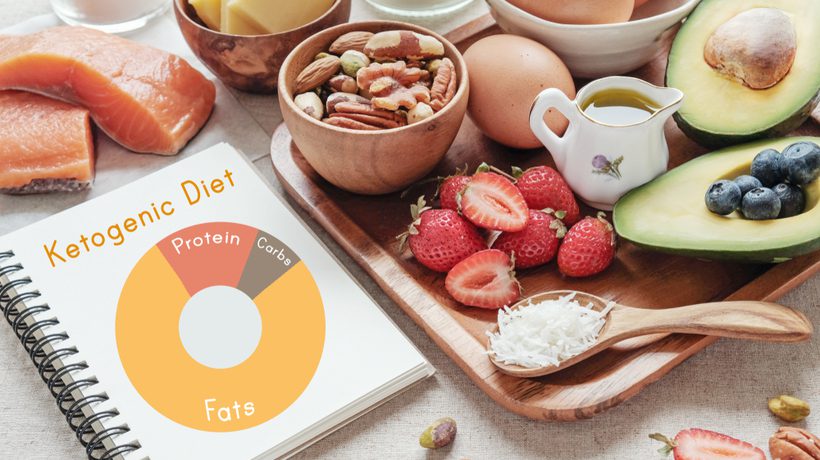
While the ketogenic diet is restrictive, there are plenty of delicious things you can eat while you’re on it. From tasty breakfast burgers to a spicy baked halibut, you’ll find that eating ketogenic doesn’t mean you can’t eat well. Let’s look at some fat-rich meals that will leave you satisfied.
Breakfast: Breakfast burger with avocado buns
Ingredients
- 1 ripe avocado
- 1 egg
- 2 bacon rashers
- 1 red onion slice
- 1 tomato slice
- 1 lettuce leaf
- 1 tablespoon paleo mayonnaise
- Salt and pepper, to taste
- Sesame seeds, for garnish
Cooking Instructions
- Place the bacon rashers on a cold frying pan. Turn the stove on and start frying the bacon. When the bacon starts to curl, flip it with a fork. Continue cooking the bacon until it’s crispy.
- Remove the bacon from the pan and crack the egg into the same pan, using the bacon fat to cook it. Cook until the white is set but the yolk is still runny.
- Slice the avocados in half widthwise. Remove the pit and use a spoon to scoop it out of its skin.
- Fill the hole where the pit used to be with paleo mayonnaise.
- Layer with lettuce, tomato, onion, bacon, and fried egg.
- Top it off with the second half of the avocado.
- Sprinkle with sesame seeds.
Lunch: Loaded chicken salad
Ingredients
For the salad:
- 1 boneless chicken breast
- 1 tablespoon of extra virgin olive oil
- 1/4 teaspoon Himalayan salt
- 1/4 teaspoon black pepper
- 1 avocado
- 100 grams of mozzarella balls
- 1 large tomato
- 1 jar of artichoke hearts
- 1/2 red onion
- 5 asparagus stalks
- 20 basil leaves
- 4 cups baby spinach
For the dressing:
- 2 tablespoons of extra virgin olive oil
- 1 ½ tablespoon of balsamic vinegar
- 1 teaspoon of Dijon mustard
- 1 clove of garlic
- A pinch of Himalayan salt
- A pinch of black pepper
Cooking Instructions
- Peel and dice the avocado, slice the red onion and dice the tomato. Pile the basil leaves together, roll them up and slice. Cut the stems off the asparagus and slice them in half. Mince the garlic.
- Slice the chicken breast in half lengthwise. Sprinkle ¼ teaspoon of salt and pepper on each side. Heat the 1 tablespoon of olive oil in a skillet and place the chicken breasts in it. Fry on each side, about three minutes each, until they have a nice golden brown color and are cooked through. Add the asparagus beside the chicken breasts and cook for a few minutes until they’re soft and grilled. Take out the chicken and slice.
- Combine the minced garlic, olive oil, balsamic vinegar, Dijon mustard, salt, and pepper in a small bowl.
- Add the baby spinach to a large bowl or plate. Cover it with the grilled chicken, avocado, mozzarella, tomatoes, artichoke, red onions, asparagus, and basil leaves. Pour the dressing over it and enjoy!
Dinner: Baked Halibut with lemon and Thai chili
Ingredients
- 4 cups of packed spinach
- 11-oz. halibut steaks, about an inch thick (2)
- Juice from half a lemon
- Salt and pepper to taste
- A sprinkle of smoked paprika
- ½ lemon, sliced into four wedges
- Half a bunch of green onions, sliced
- 1 red Thai (bird’s eye) chili, deseeded, halved, and thinly sliced
- 1 cup of cherry tomatoes, cut in half
- 2 tablespoons of avocado oil, divided
Cooking Instructions
- Preheat the oven to 400 degrees Fahrenheit. Layout two large squares of foil and divide the spinach between the two pieces equally, placing it in the middle of each square.
- Layout the halibut steaks on a chopping board. Remove the membrane running down the middle of each steak, as well as the small bone. Run a small knife between the flesh and the membrane, separating each side of the steak away from both membrane and bone. Each steak should now be divided into two separate pieces of fish, so that you have four pieces in total.
- Lay two pieces of halibut on top of each pile of spinach. Squeeze the lemon juice over the fillets, season to taste with smoked paprika, and top each one with a slice of lemon.
- Divide the sliced green onions, Thai chili, and cherry tomatoes equally between the two squares. Divide the avocado oil so that each piece of fish is topped with about ½ tablespoon of oil.
- Wrap the foil around the fish tightly and place both packages on a baking tray.
- Bake for approximately 15 minutes until the fish is cooked through and flakes easily.
- Remove the fish from the packages (as well as the skin from the fish if you want) and put on a plate, spooning the juices over the fillets before serving.
Snack Suggestions: Beef jerky, string cheese, nuts or seeds, stevia-sweetened dark chocolate, seaweed snacks, kale chips, and avocado slices.
Drink Suggestions: Coffee with milk, tea, stevia-sweetened soda, La Croix, unsweetened non-dairy milk, and veggie smoothies.

